With the rainwater tanks installed beneath the deck, the property’s landscape remains untouched while capturing and reusing thousands of gallons—a proof-point for creative sustainability in tight spaces.
Frank faced a unique challenge—his property’s compact footprint left no room for traditional rainwater storage. Instead of sacrificing outdoor space, he and the project team turned to the only available spot: the unused area beneath his deck. This under-deck solution delivers substantial storage and leaves Frank’s landscaping and living space completely undisturbed.

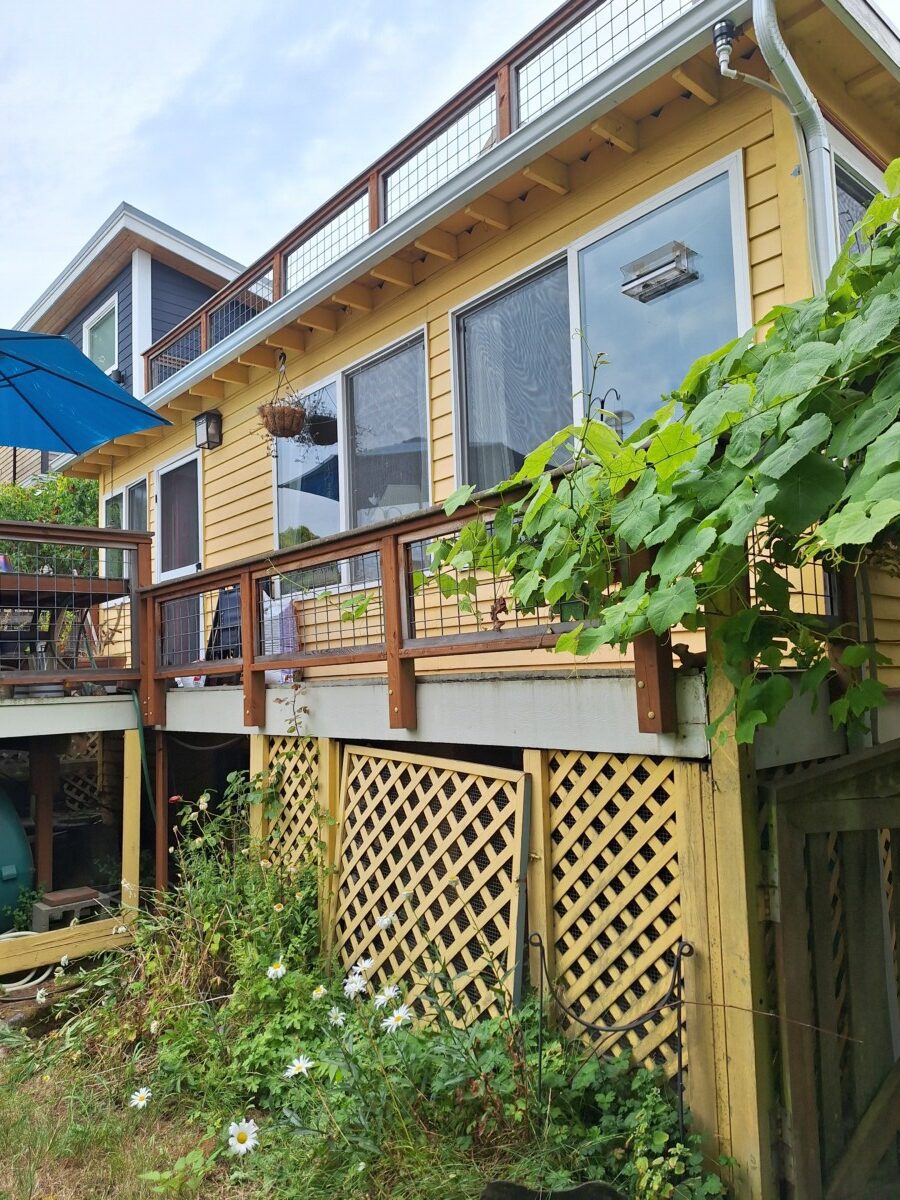
With only two feet between property lines on each side, this project required a creative water pathway. Here’s how rain moves from Frank’s roof, through three deviators, and along horizontal runs—utilizing gravity in both vertical and horizontal vectors—to reach the under-deck tanks.
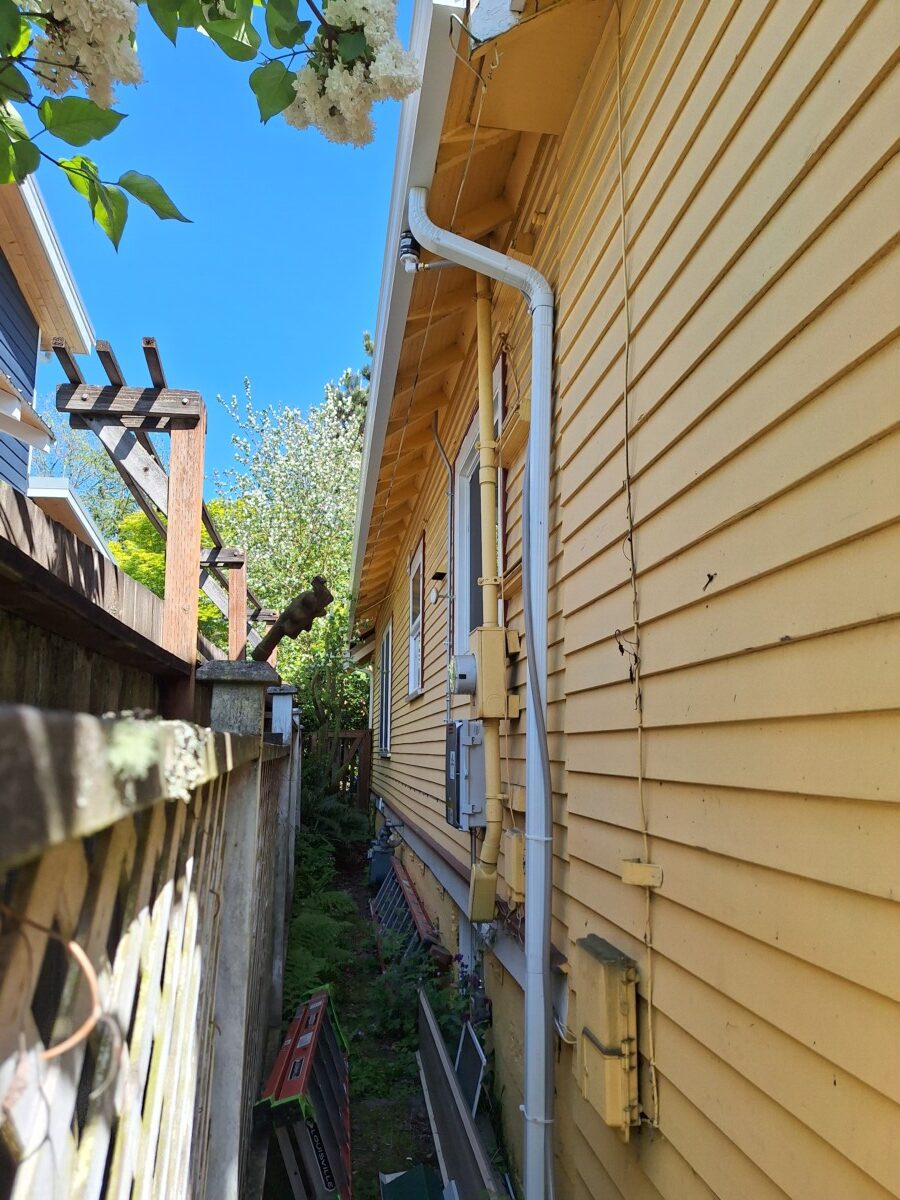
West Side: Roof runoff is captured by a gutter deviator only ~5 feet from Tank 1 and 25 feet above the ground. Water drops vertically and then moves horizontally—showcasing how narrow borders are no barrier to big storage.
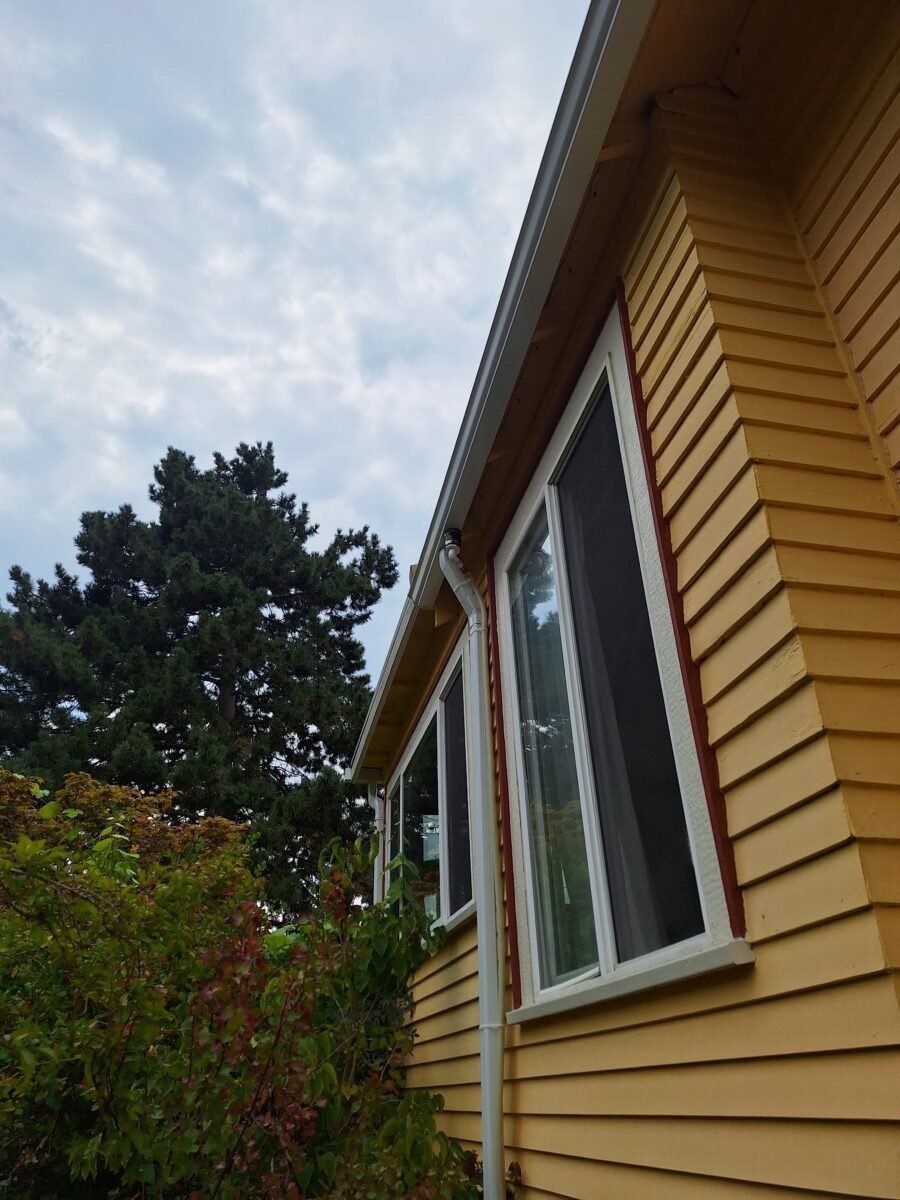
East Side: Water collects via a deviator 30 feet from the tank, about 20 feet high, then travels a full 75 feet horizontally to the tank—using gravity alone with no pressure loss or kinking.

South Side: Here, the deviator sits 15 feet from Tank 1 with a 12-foot drop. The water makes its way down and across, again straightforward with standard hoses and the power of gravity.
Frank’s established garden relies on a network of soaker hoses, each zone controlled by timers and a high-pressure manifold. To supplement his city water with rainwater, the system now includes a dual-feed union on select zones: municipal supply as usual, and rainwater from the under-deck tanks, delivered via pump when needed. With three out of four zones now hybrid-ready, Frank simply opens a dedicated valve to bring rainwater into the line—future-proof, flexible, and cost-saving.
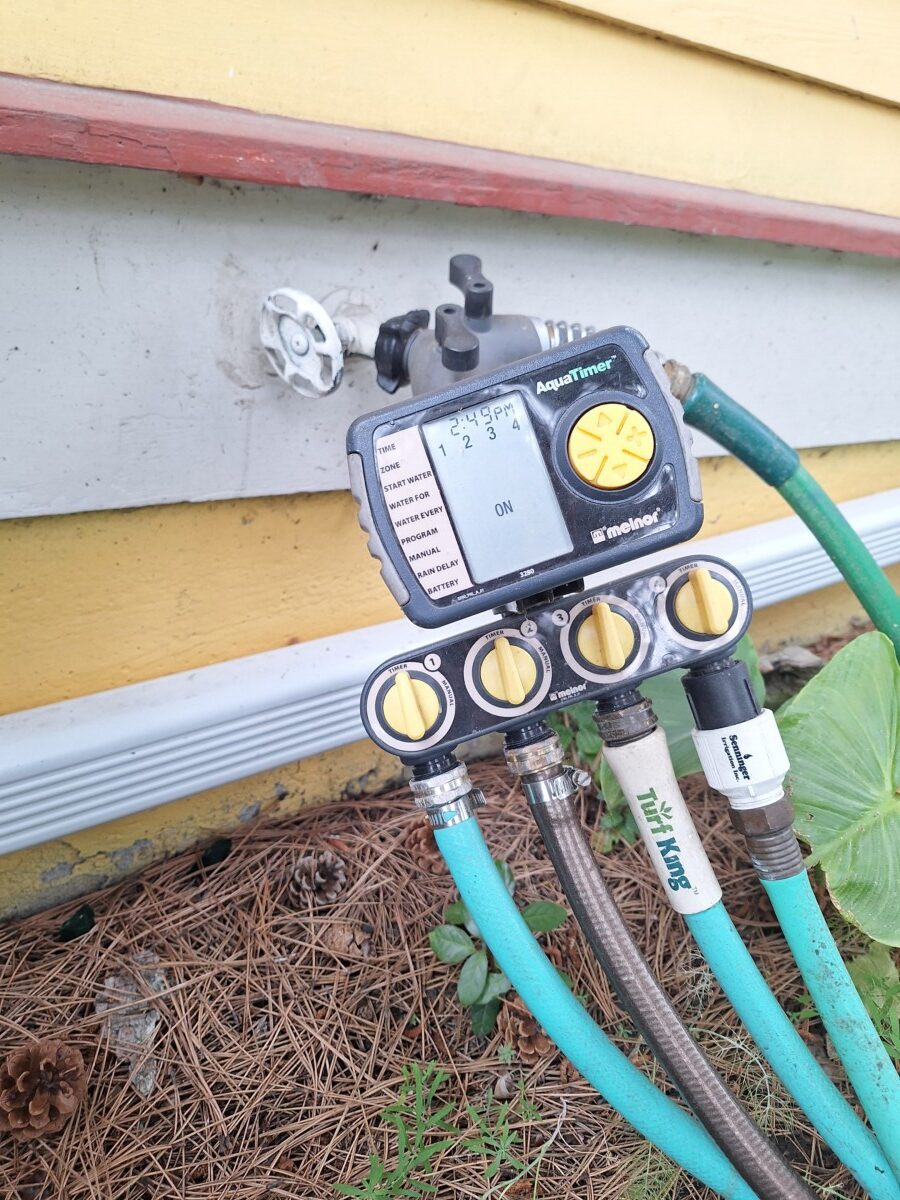
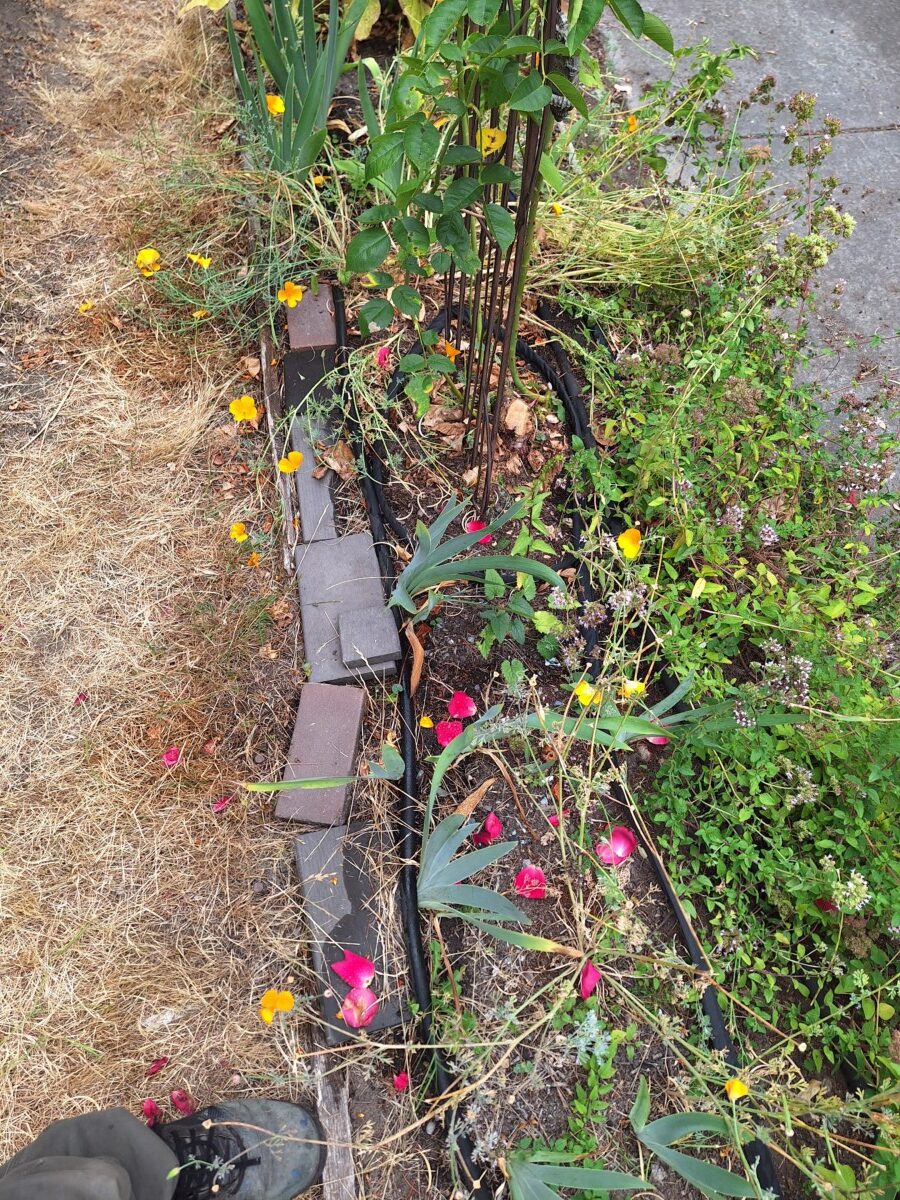
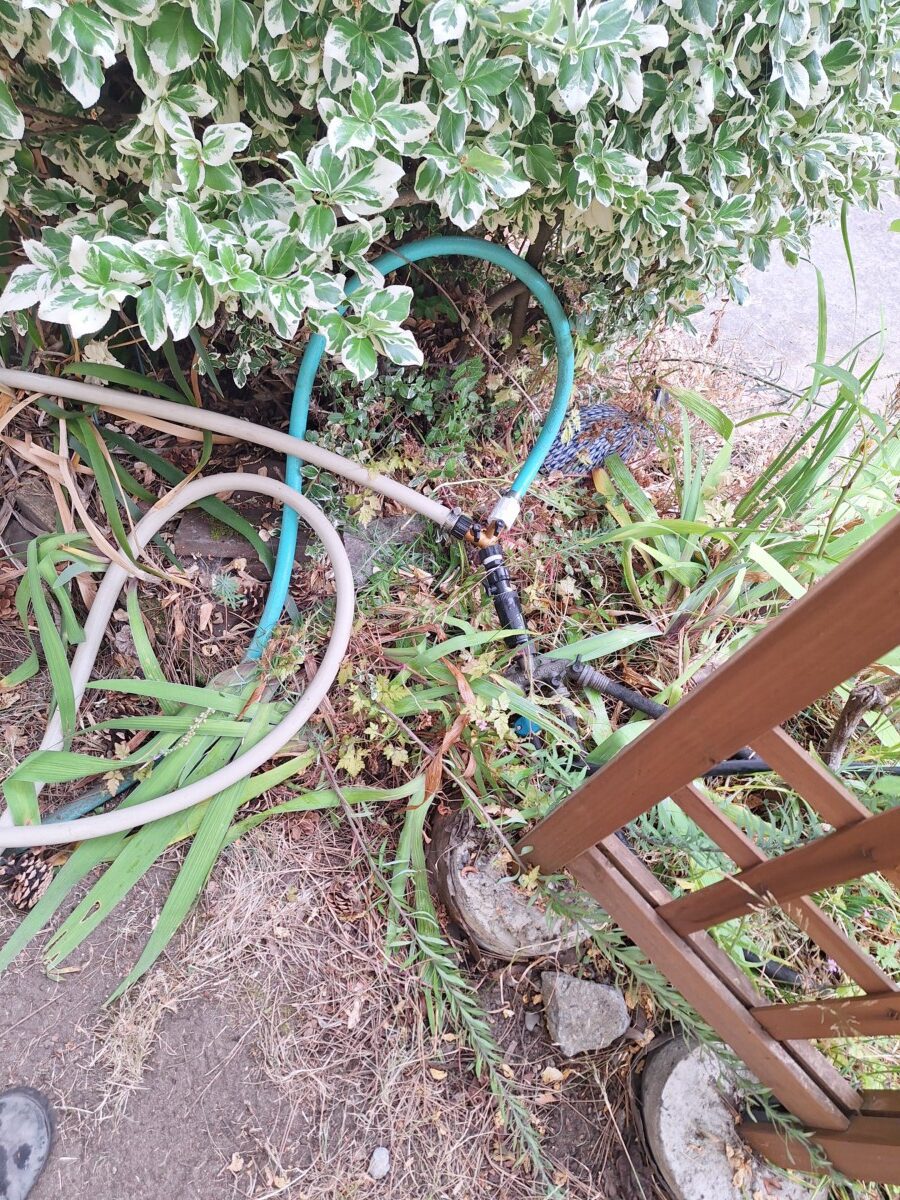

| Question | Answer |
|---|---|
| Why were the rainwater tanks installed under the deck? | Space constraints prevented traditional tank placement—under the deck was the only available location that kept the landscape undisturbed while maximizing storage. |
| How does rainwater get from the roof into the tanks? | Rainwater is diverted from three roof locations via gutter deviators, then routed vertically and horizontally through standard hoses using gravity to fill the under-deck tanks. |
| What makes this system work on such a tight property? | The design leverages gravity-fed flow and horizontal hose runs, enabling large capacity in areas with only narrow side borders and limited outdoor space. |
| How is the rainwater used in the garden? | Rainwater supplements city water for irrigation. Three out of four zones can receive rainwater via a pump and dual-feed union, controlled by manual valves and timers. |
| Can the system operate automatically while the homeowner is away? | Yes. The pump and irrigation timers automate scheduled watering; Frank only needs to set the valves in advance. |
| Does this hybrid system require special equipment? | It uses standard soaker hoses, a high-pressure manifold for municipal water, valves to switch sources, and a pump controlled by a timer for rainwater delivery. |
| What is the impact on city water use and bills? | The system significantly reduces reliance on municipal water, particularly during the rainy season—lowering annual consumption and cost for irrigation. |
| How do I know if this solution will work for my property? | If your property has space constraints, unused areas (like under a deck), and sufficient roof runoff, a similar rainwater system can usually be adapted. |
| What are future upgrade options for this system? | Plans include switching to low-pressure soaker hoses, larger capacity, or integrating additional automation and control features as technology improves. |
| Who can help design and install a similar system? | Product Water’s team specializes in tailored water solutions for properties facing unique size and placement challenges. |